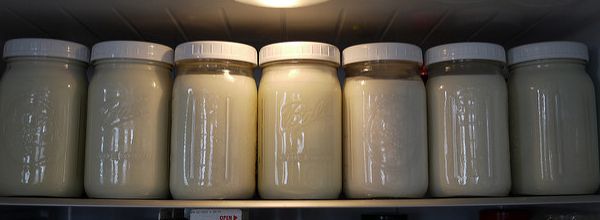So, you’ve successfully performed your experiments, and now have a good chunk of data sitting in front of you. You have already analyzed your data and prepared nice figures with error bars and statistical significance values. You can’t put it off any longer – you need to write your first scientific manuscript.
This task can seem daunting at first, but with a little organization and planning, you’ll soon be publishing.
Here’s some advice on how to organize your thoughts and take that next step towards preparing a scientific manuscript.
1. Determine the sequential order of your figures
This is the hardest and most important part, and where everything falls in to place. Your manuscript is essentially telling a story of how you arrived at your hypothesis, the subsequent experiments performed to test that hypothesis, and the information revealed by the resulting data.
The overall story is probably very clear (we’re trying to understand X), but the logic underlying how you went from experiment A to experiment B to experiment C is its own narrative. This is sometimes overlooked, because scientists multitask and perform experiments side-by-side.
So, determine the logic in the progression of your experiments, and then arrange your figures in order based on that logic. You might learn that you need to do another experiment, or that certain graphs fit better as different parts of one figure (i.e., Figure 1a, 1b, 1c), or that certain figures belong in supplemental information. Once you have done this, writing the rest will be a million times easier because your intro, results, and discussion sections will have an outline for you to refer to.
2. Write your methods section
Along with the figure legends, this should be pretty mindless work because the need for creativity is minimal. Make a list of the experiments that produced the data represented in the figures, and describe the steps involved in the procedures for those experiments. The amount of detail here is a little subjective, depending on the journal, and the type of article. Obviously an article submitted to Nature Methods will require substantial detail. Ultimately, you want your readers to have a good image in their head of how you went about your experiments.
3. Write your results section
Now that you have your figures in order, you can begin writing your results. The results section doesn’t require too much creative writing either. Detail out your data, and be as succinct as possible in describing what you found. Use words like “interestingly, X protein was more abundant in…” or simple phrases like “X protein was decreased 25%, an unexpected finding based on previous research”. However, do your best to keep commentary at a minimum here because that is what the discussion section is for.
4. Write your introduction
This is where individual style begins to come in to play. There are probably several groups that have published work in your field, and if you’ve read their manuscripts, I’m sure you have noticed a good deal of overlap among the information presented. This is inevitable, obviously, because you’re all studying the same molecules, pathways, etc., and drawing from the same literature. The way that you describe these molecules, however, is what’s uniquely yours.
So give some background, tell the readers how you arrived at your hypothesis, describe your experiments and results, and don’t be afraid to do it in a way that utilizes your own creative talents a little. Remember, science is supposed to be objective, so don’t be over the top or extravagant, but a spoonful of sugar definitely helps the medicine go down.
5. Write your discussion
Last but not least, turn toward the discussion, or how you interpret your results. This is an area where no one else has proposed the ideas/thoughts/interpretations you’re about to propose, so take your time in figuring out what you want to say. You’re the first person with the opportunity to ask yourself: What could this mean? Notice I used the word could. The discussion is where possibilities are usually discussed, so think of the possibilities!
While you’re thinking creatively about the interpretation of your findings, also be mindful of stating the unknown. If you really don’t know why something happened a certain way, then say so, but say so scientifically. For example, “This will require further investigation” or “This presents a new avenue for further research”. At the end of the day, your data should speak for itself, but your creative commentary in the discussion will show readers a fresh way of thinking, and possibly, hopefully, inspire/stimulate new ways of thinking that will contribute to advancing the field.
6. Write your abstract
Now that everything is in place, you can use your paper as an outline for your abstract. Because of its brevity, the abstract is its own animal, and as such, you should treat it with the same respect as the manuscript itself. Check out this link for some great advice on how to write a stellar abstract.
This is my recipe to help organize your thoughts and steadily piece together your first manuscript. For further advice on some intricacies associated with publishing, like journal selection and the editorial process, take a look at this detailed piece by Jode Plank.
If you have any ideas or suggestions, please let us know in the comments section below. Thanks and bon voyage!



